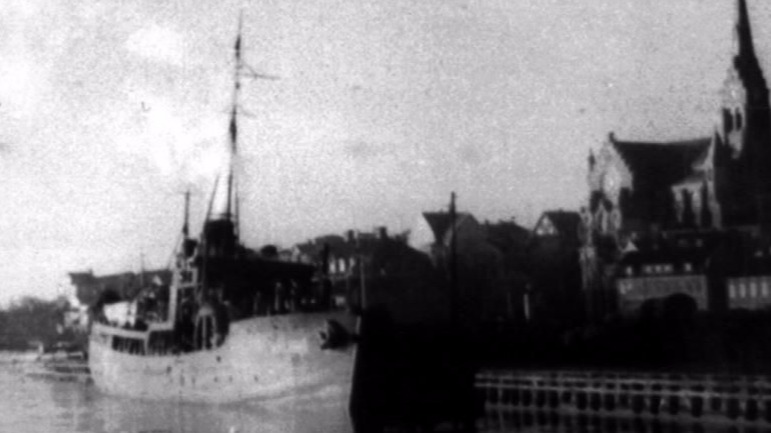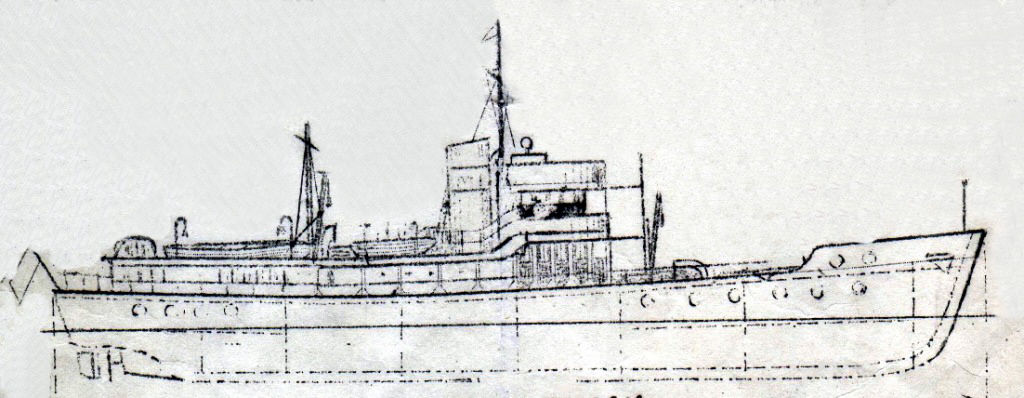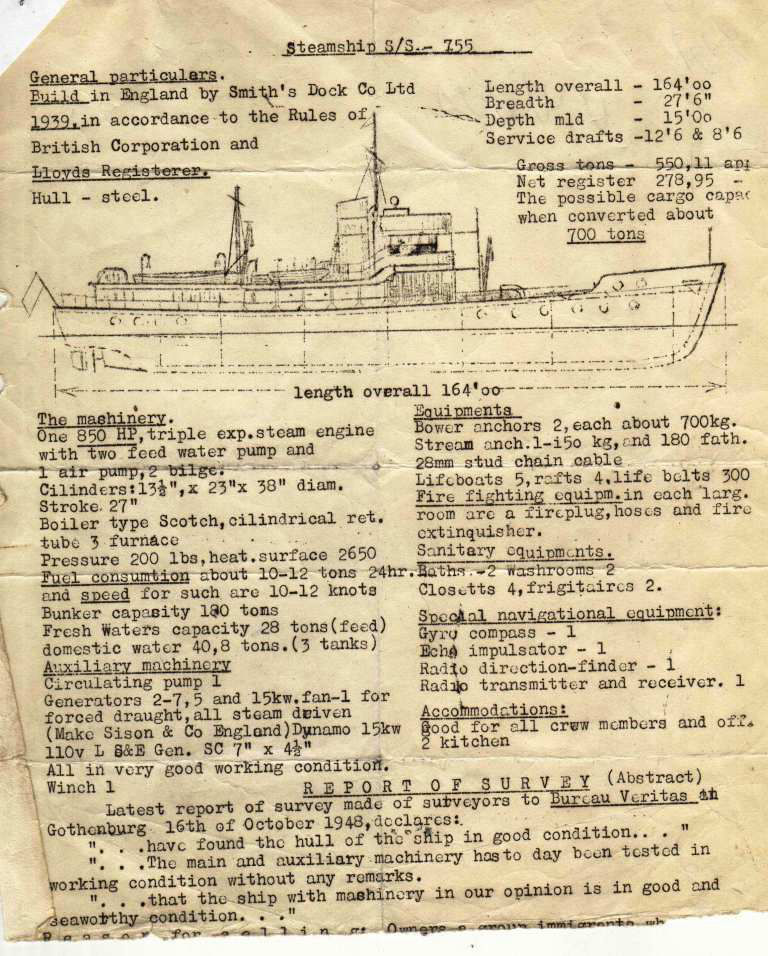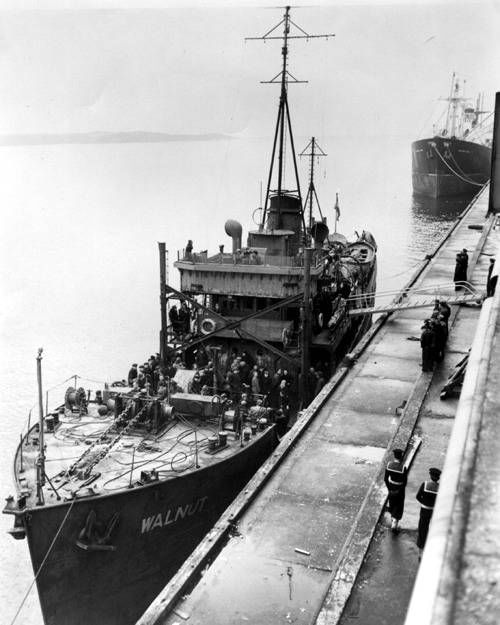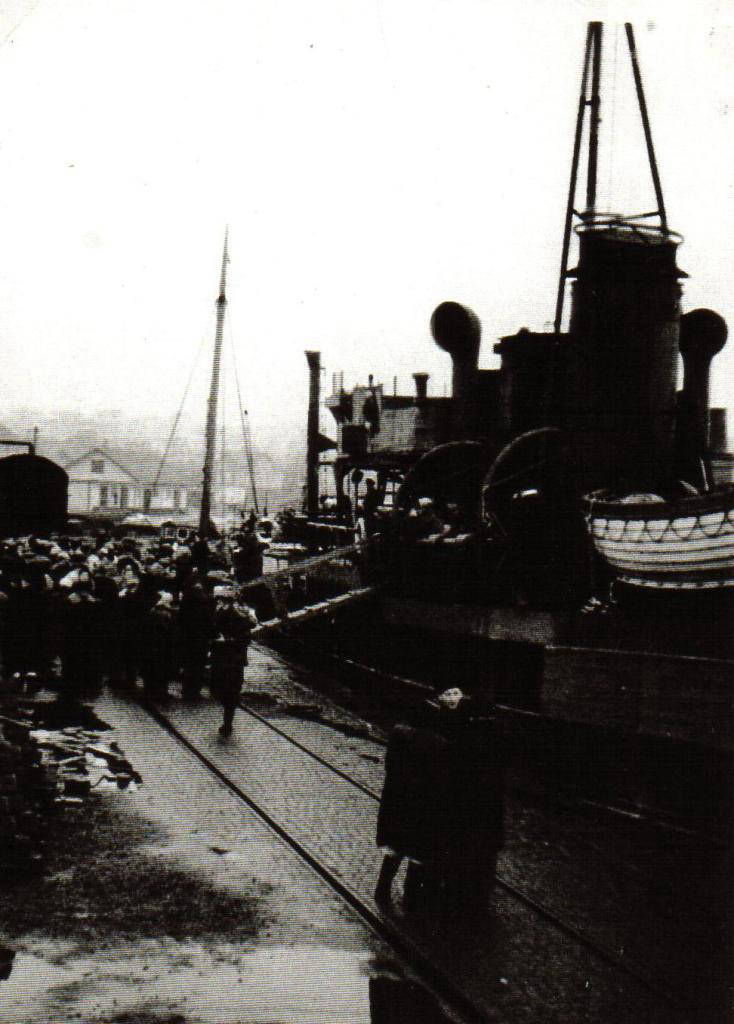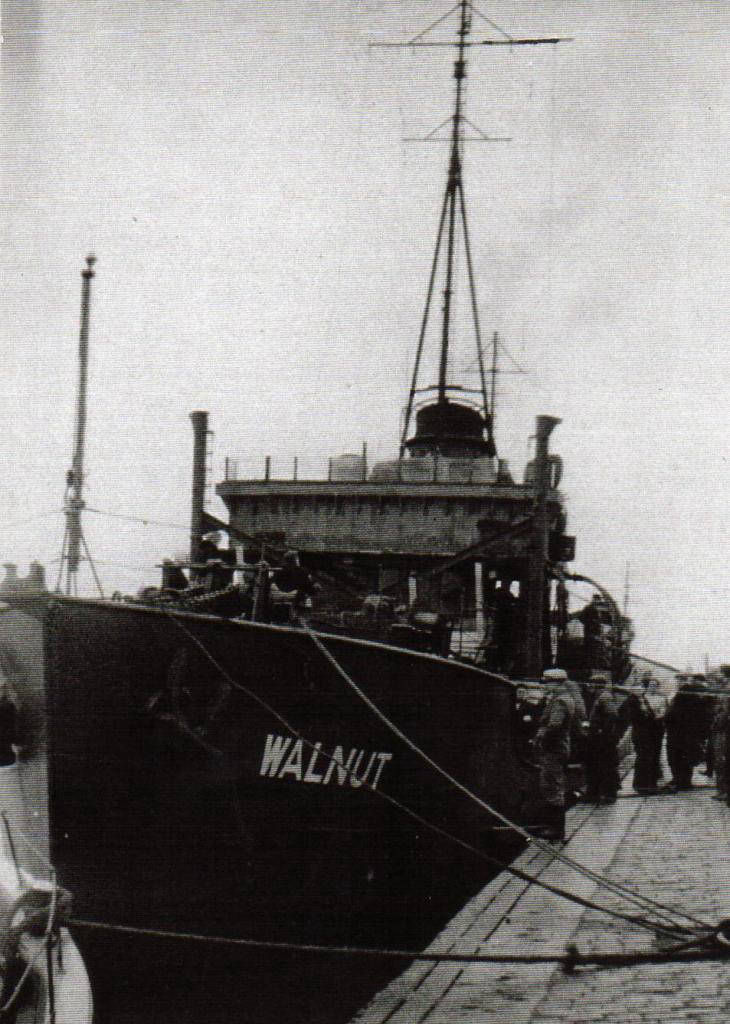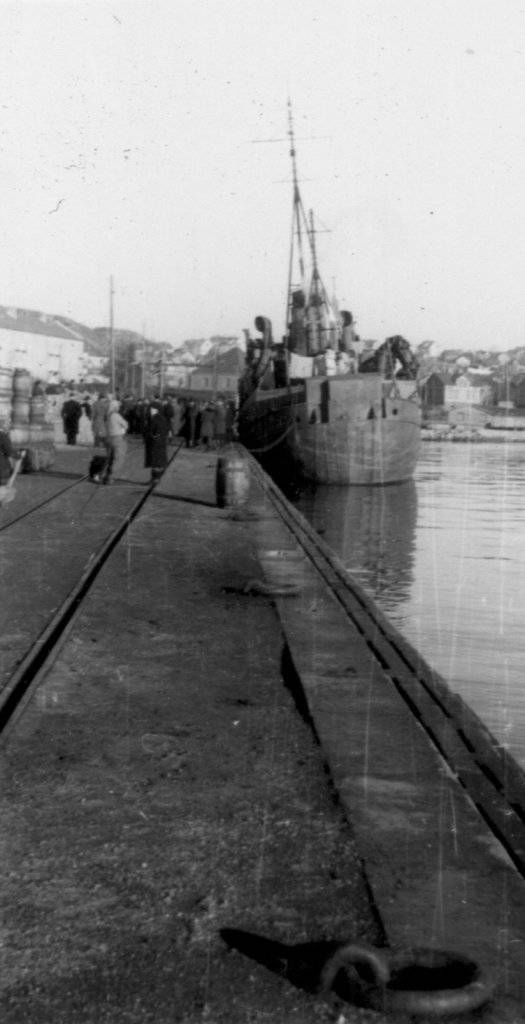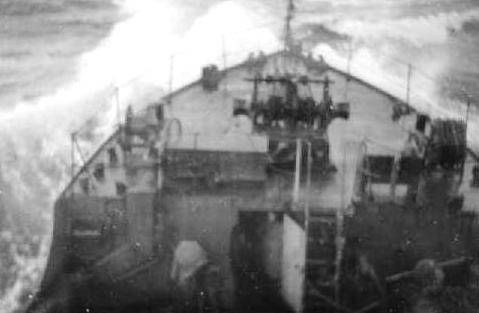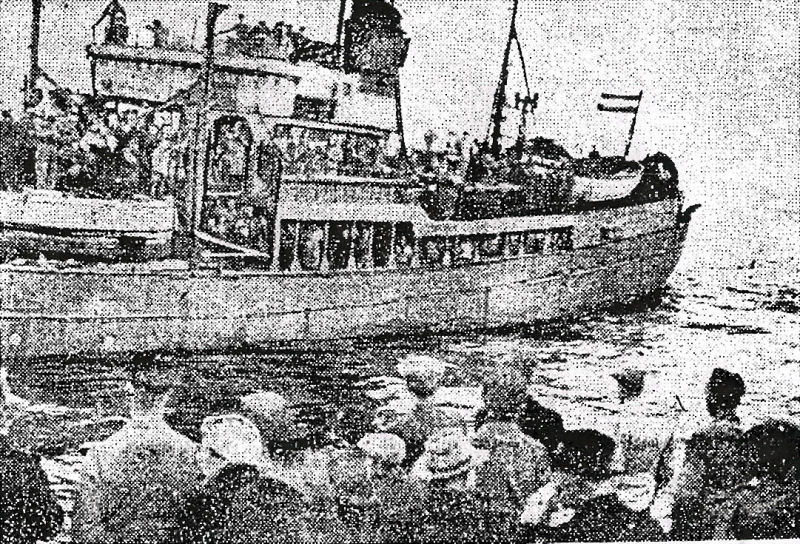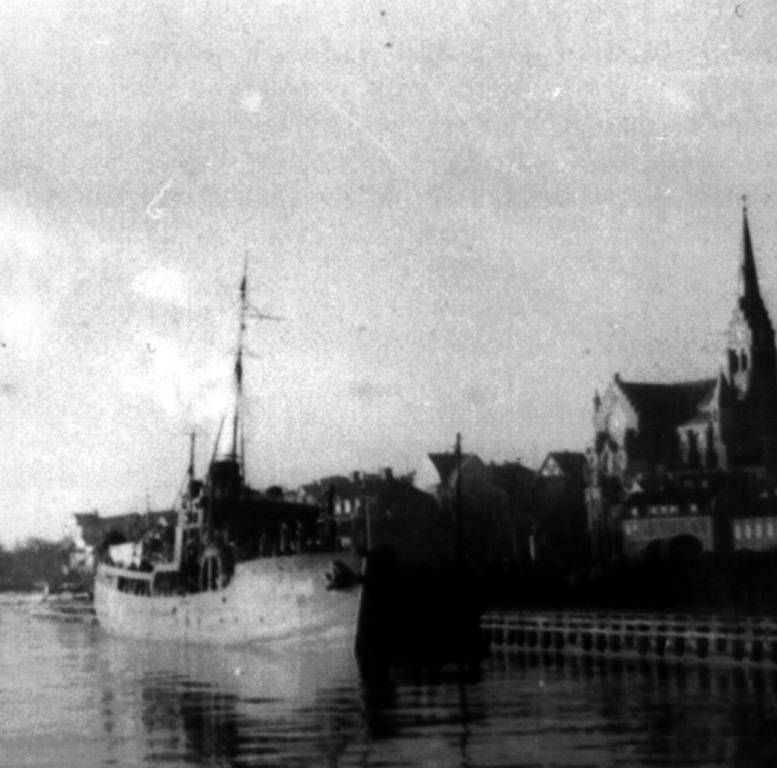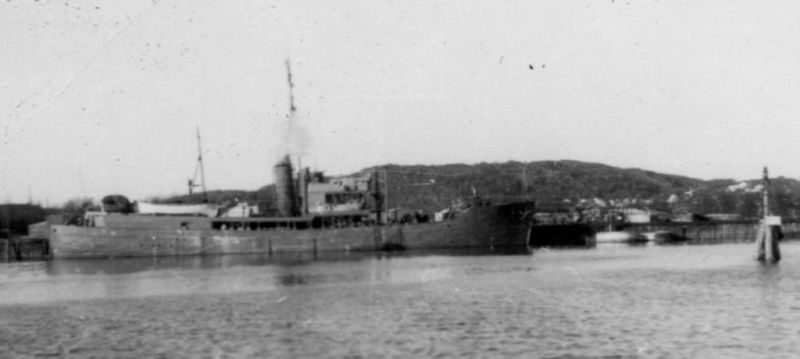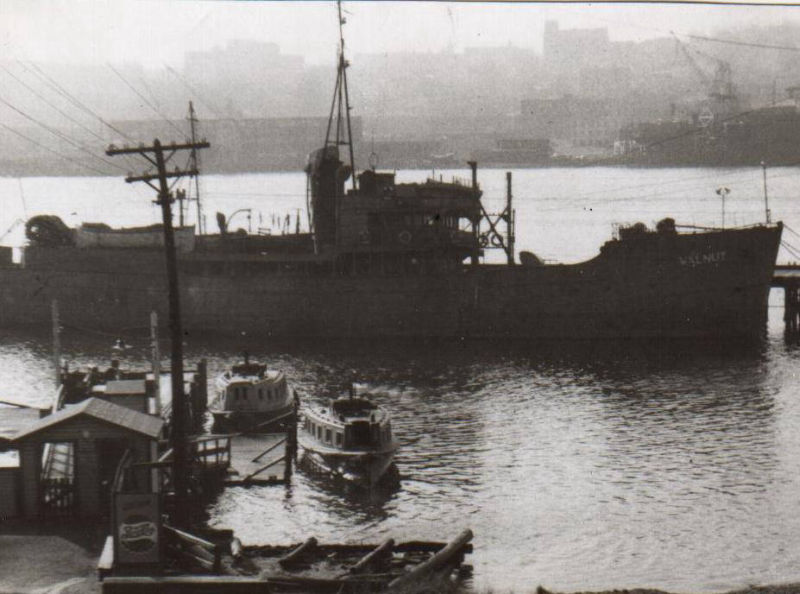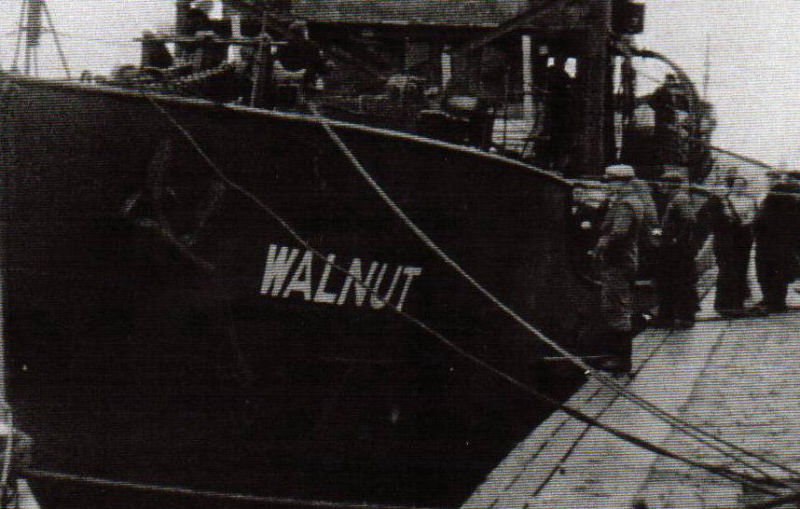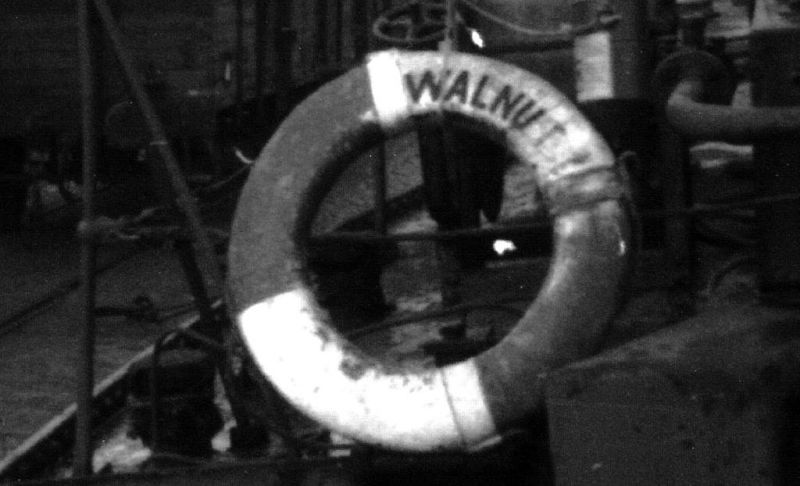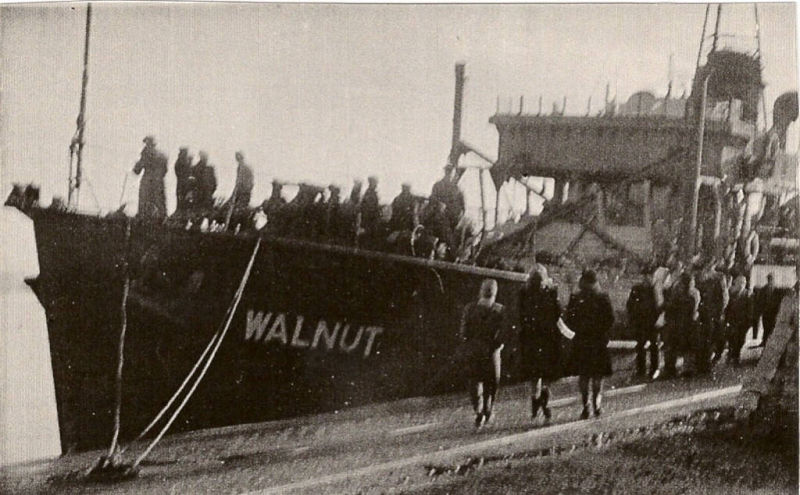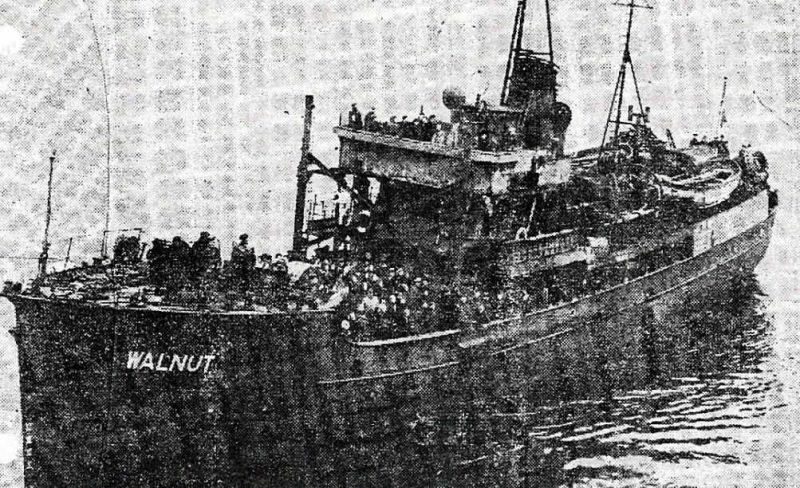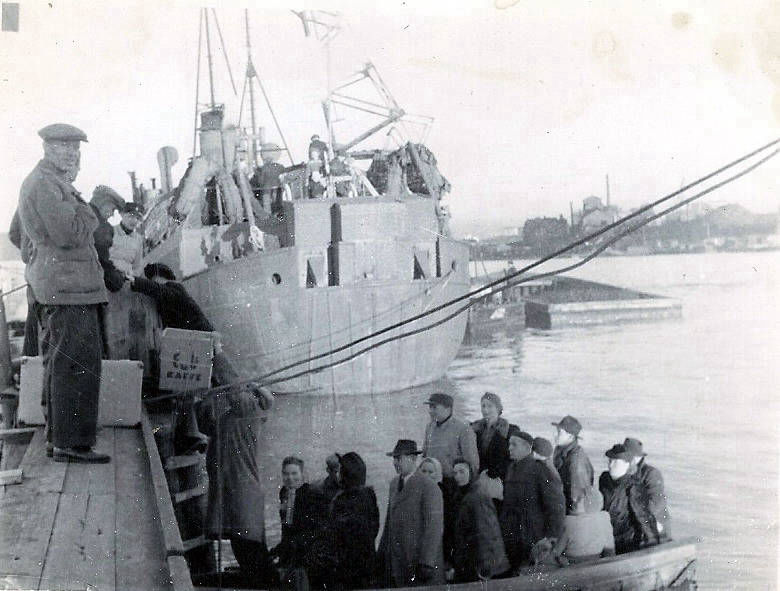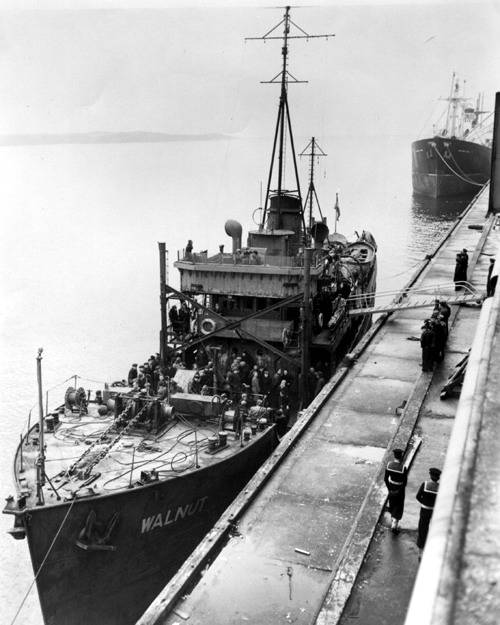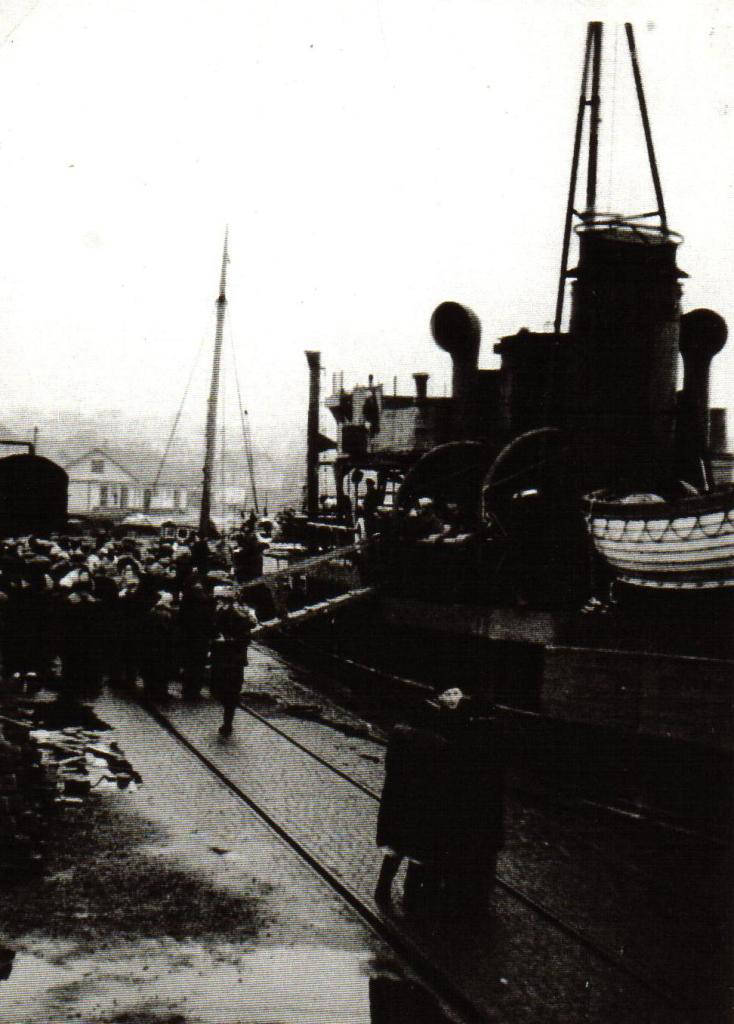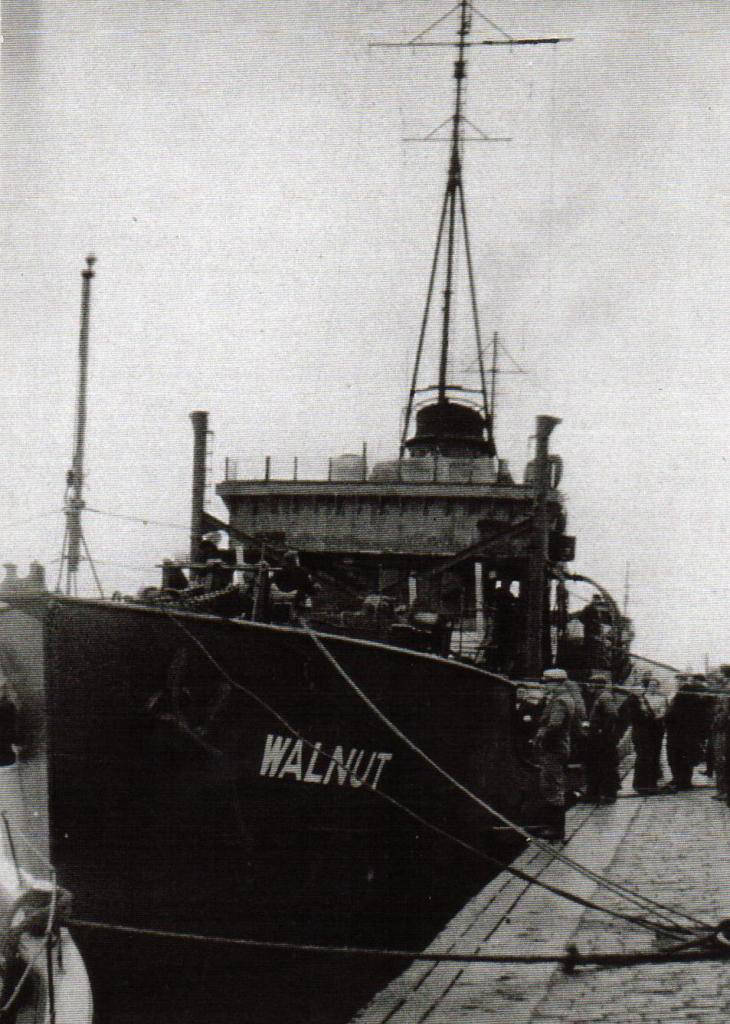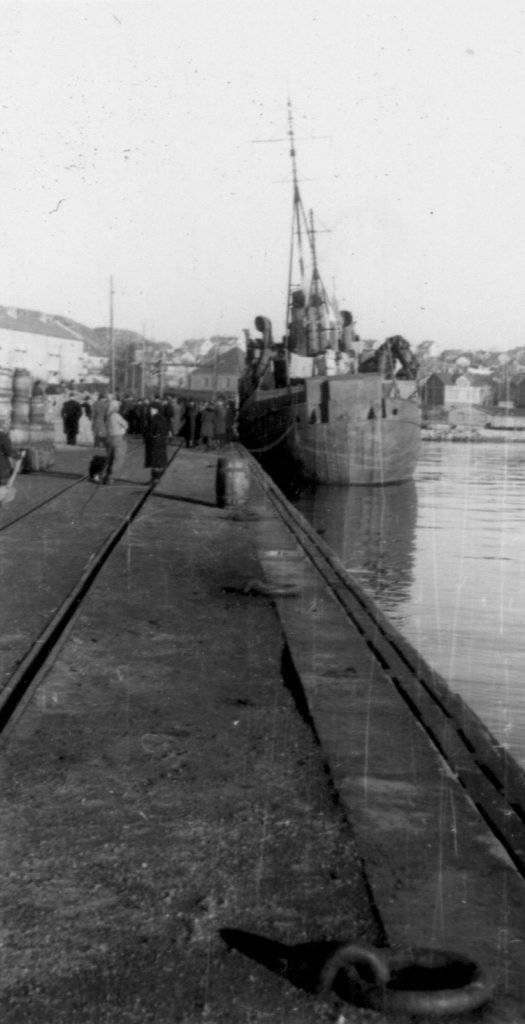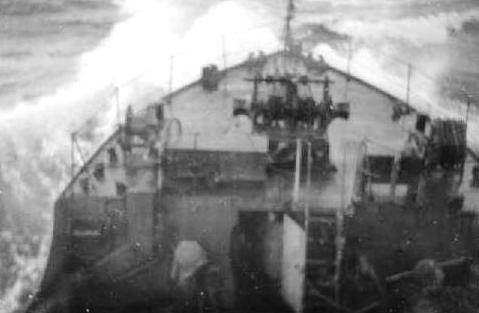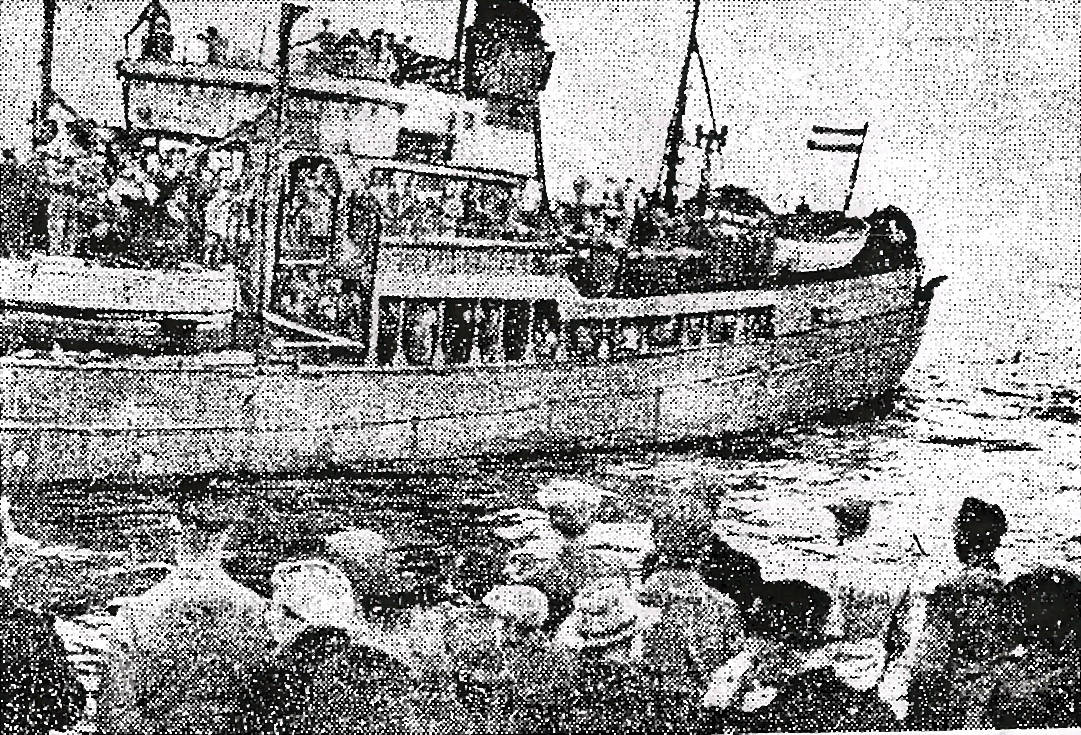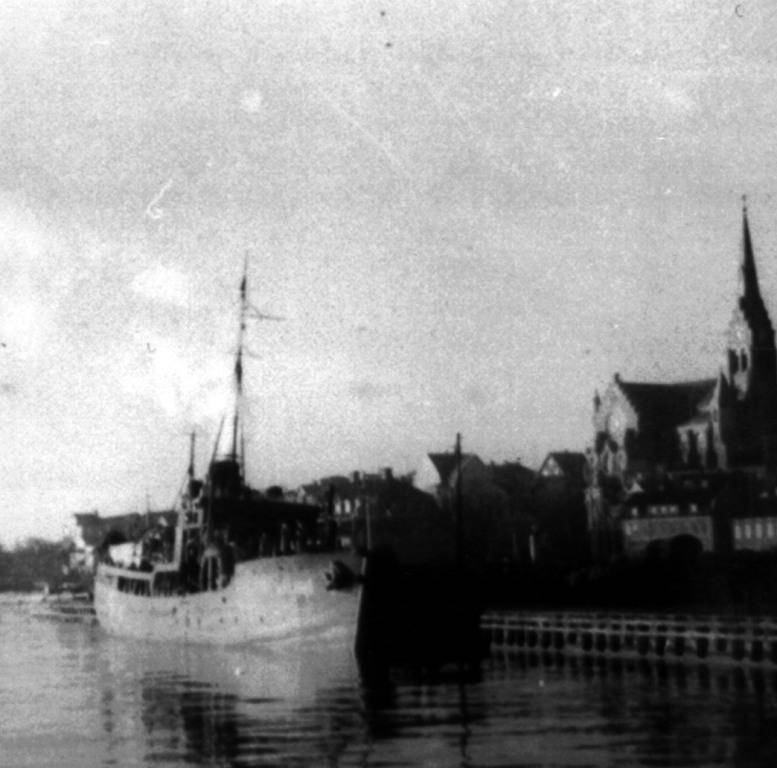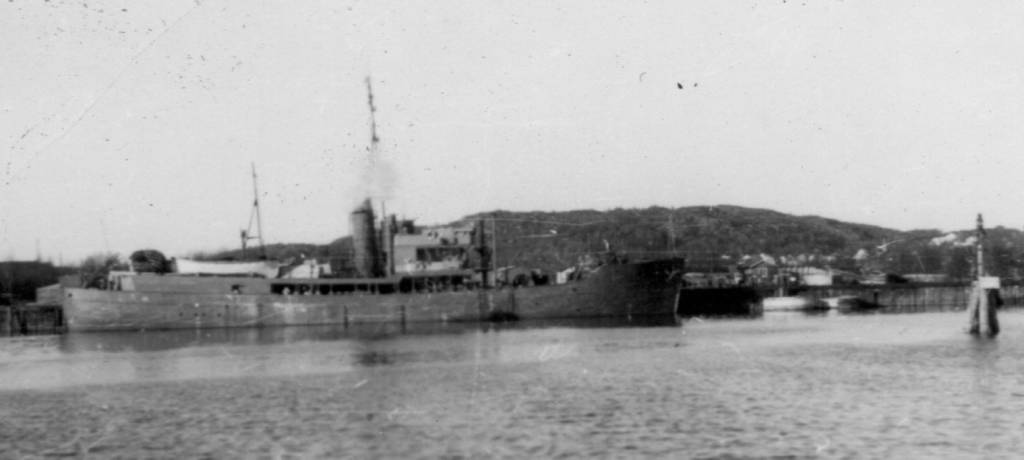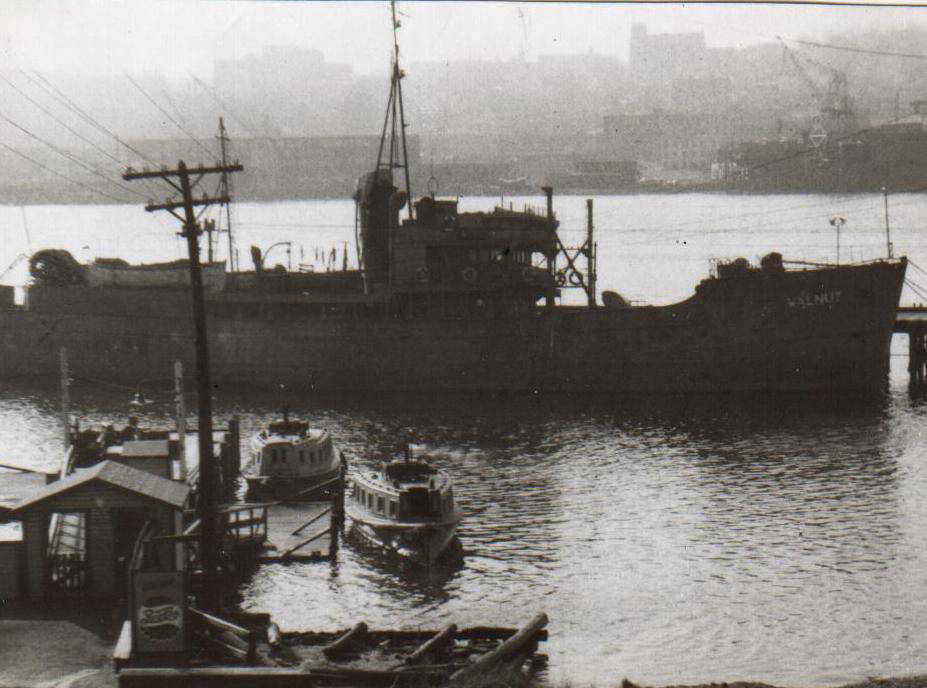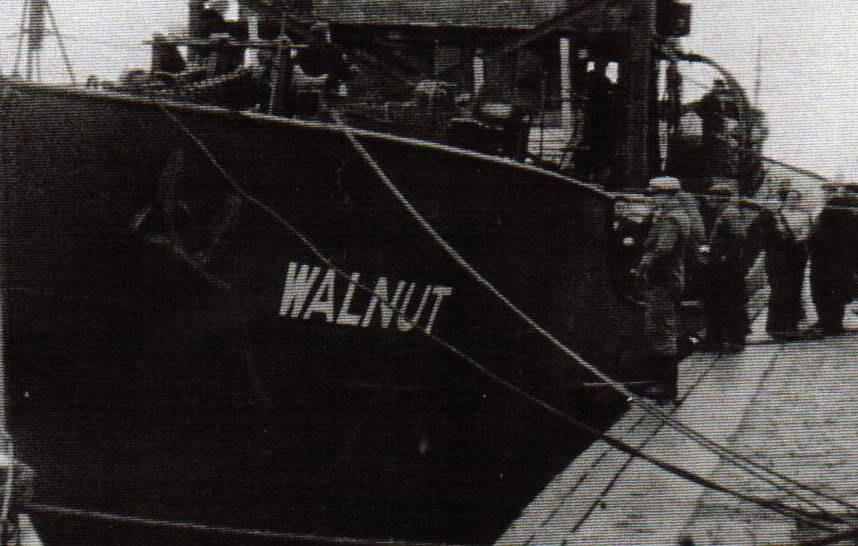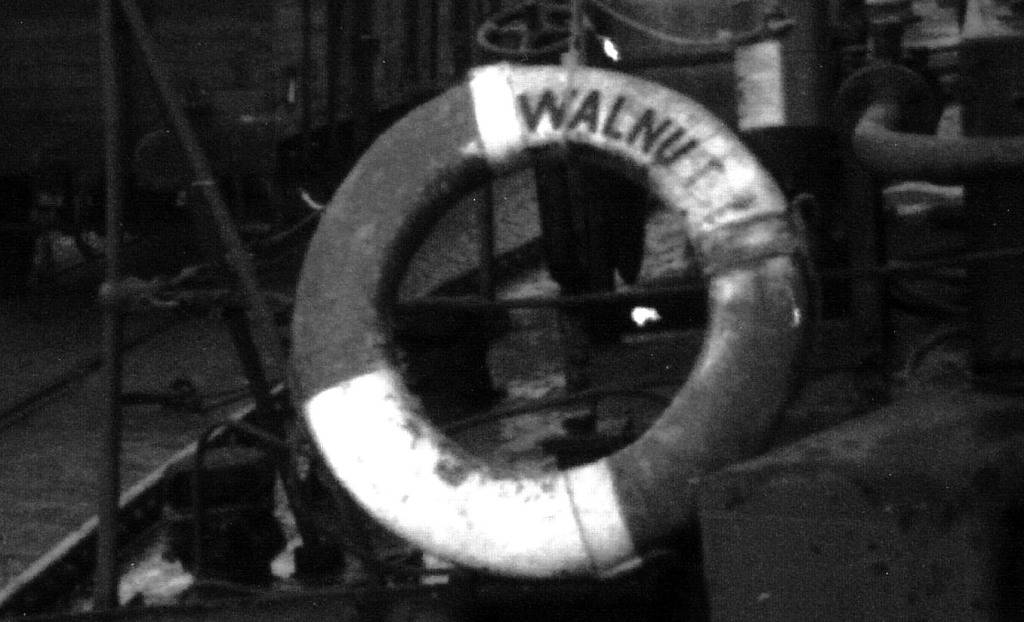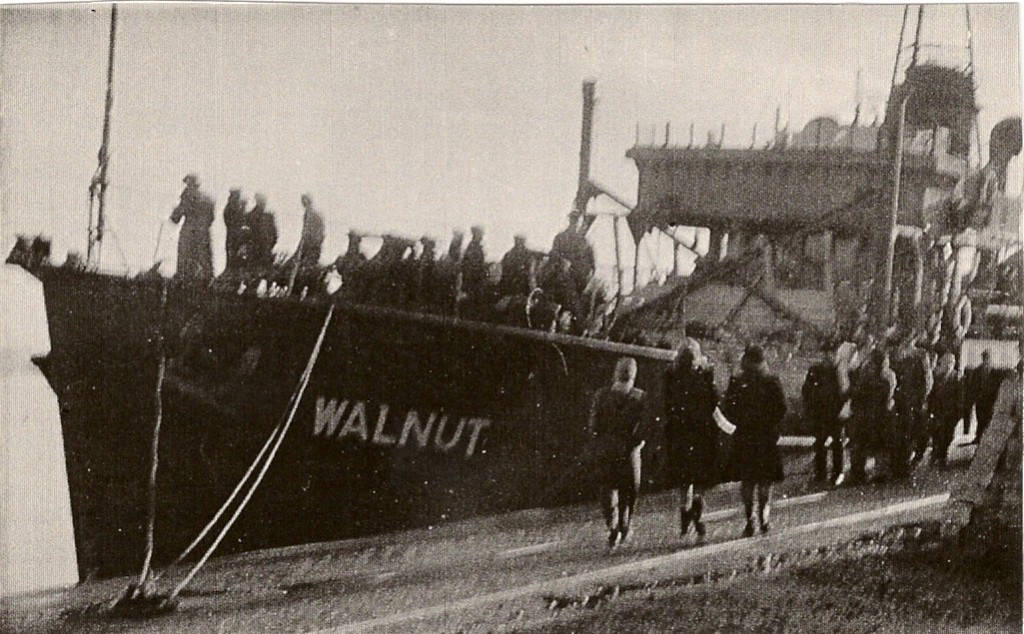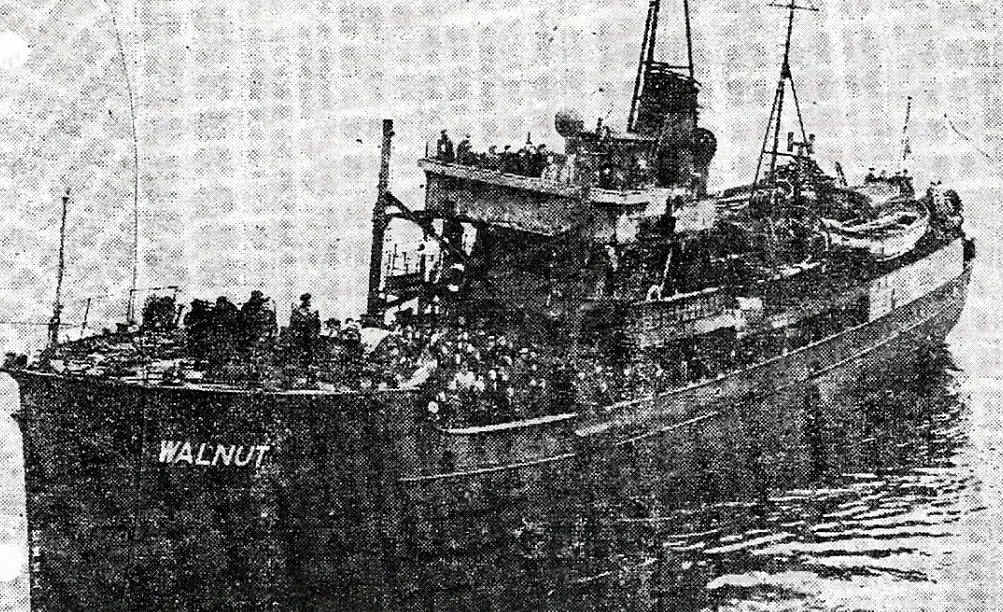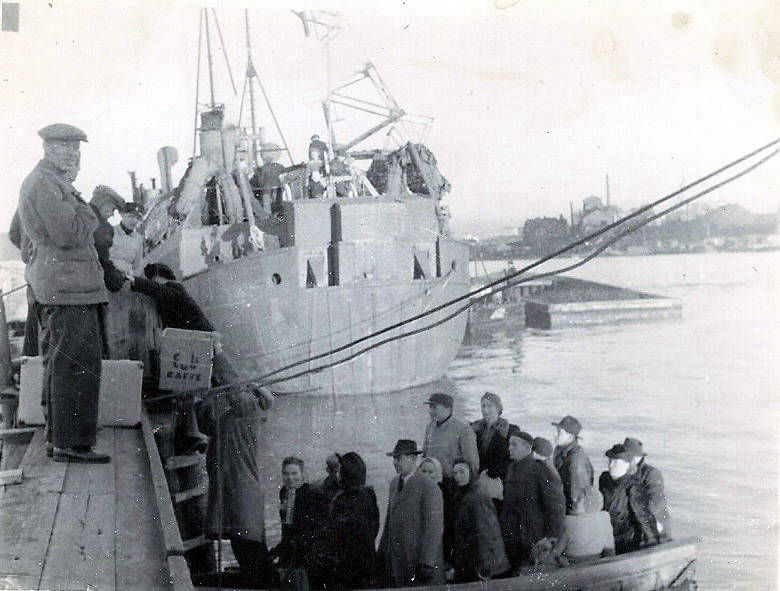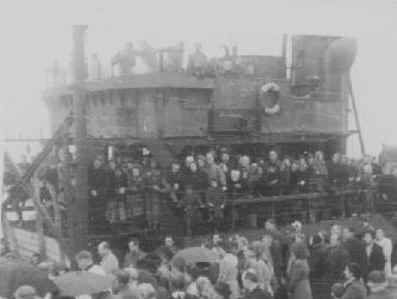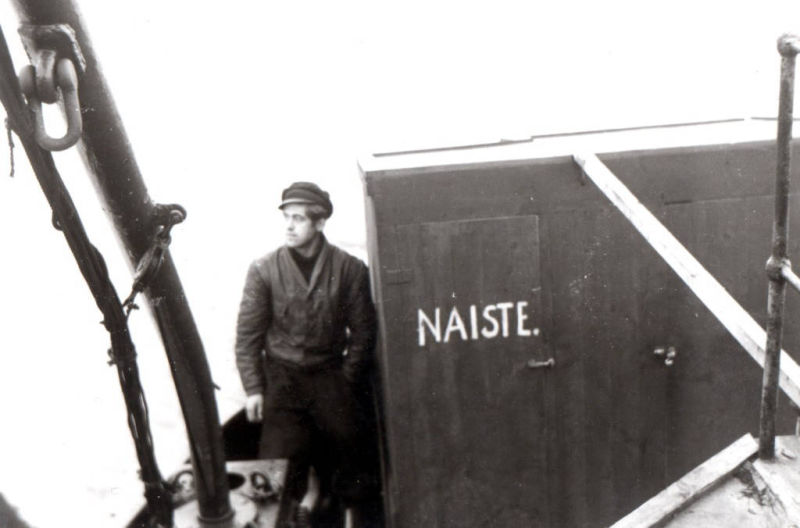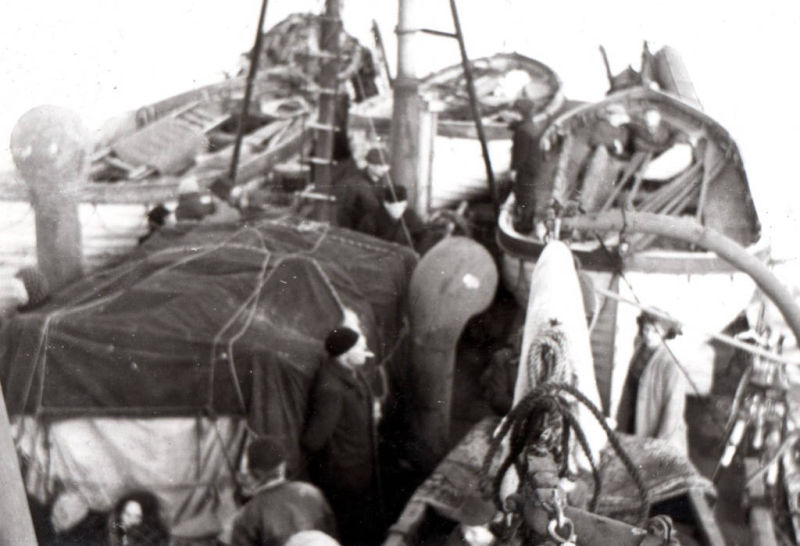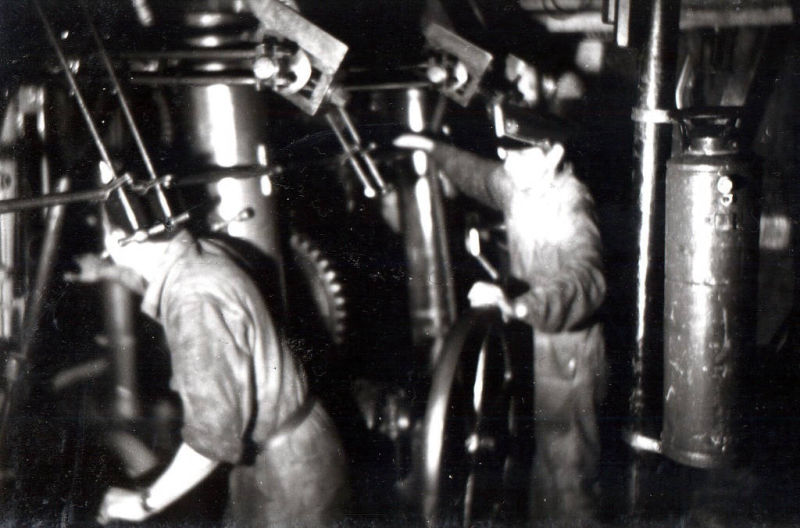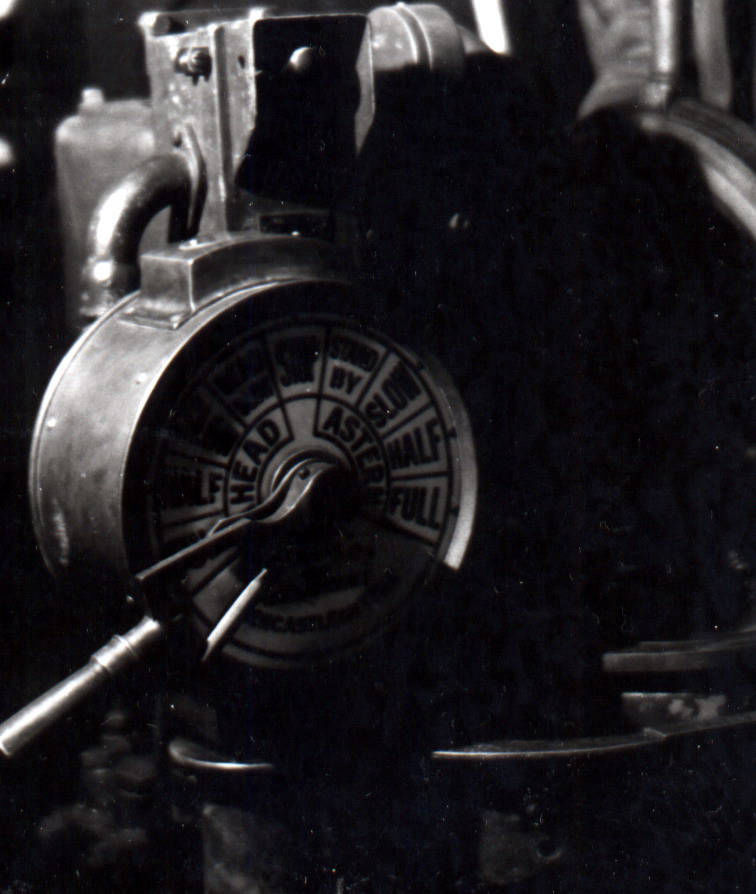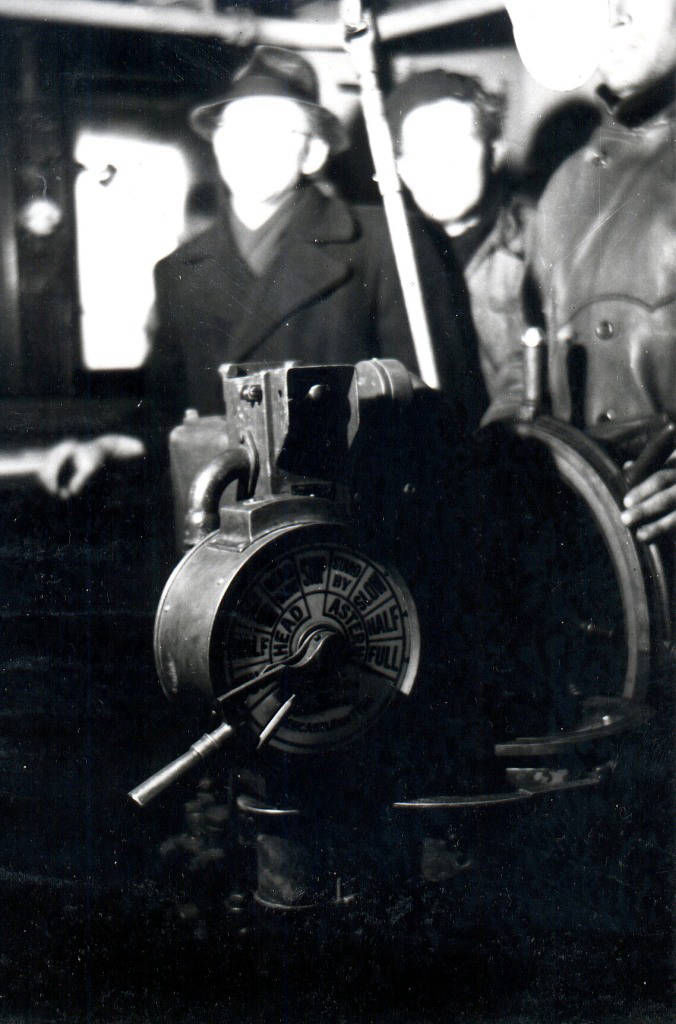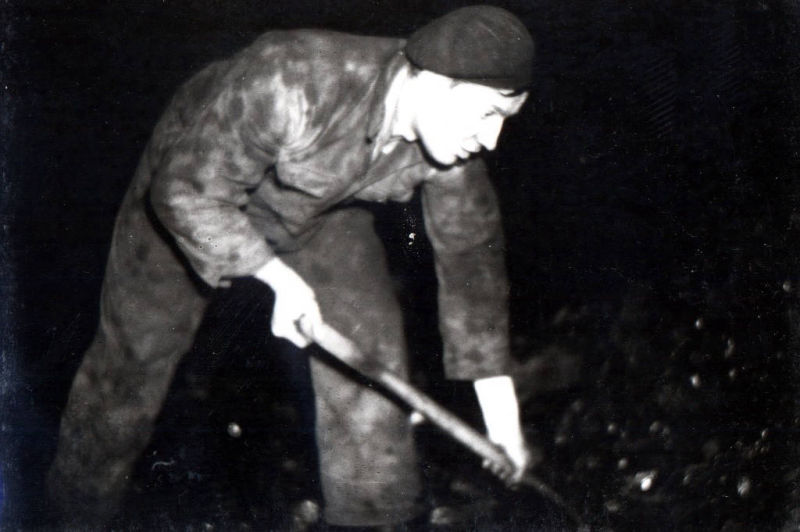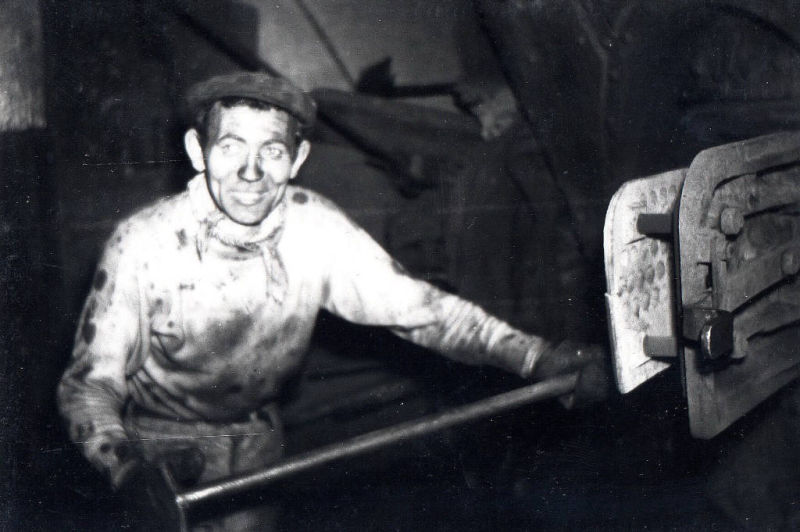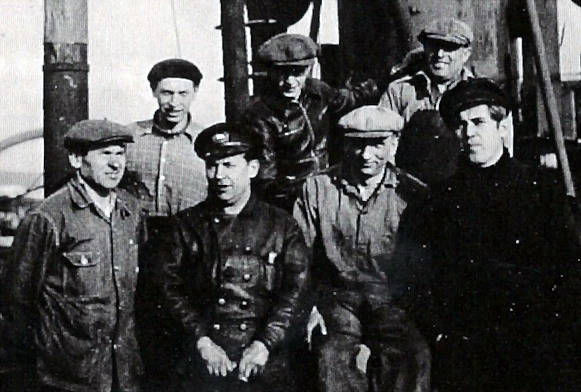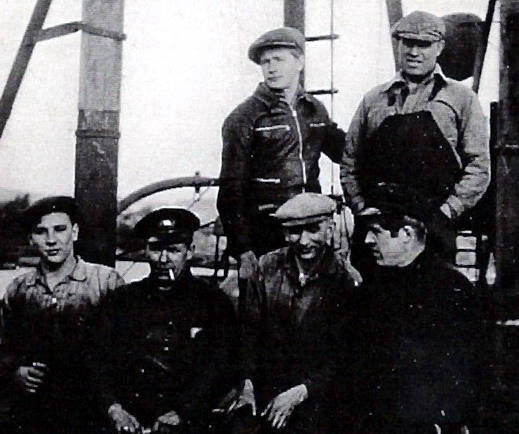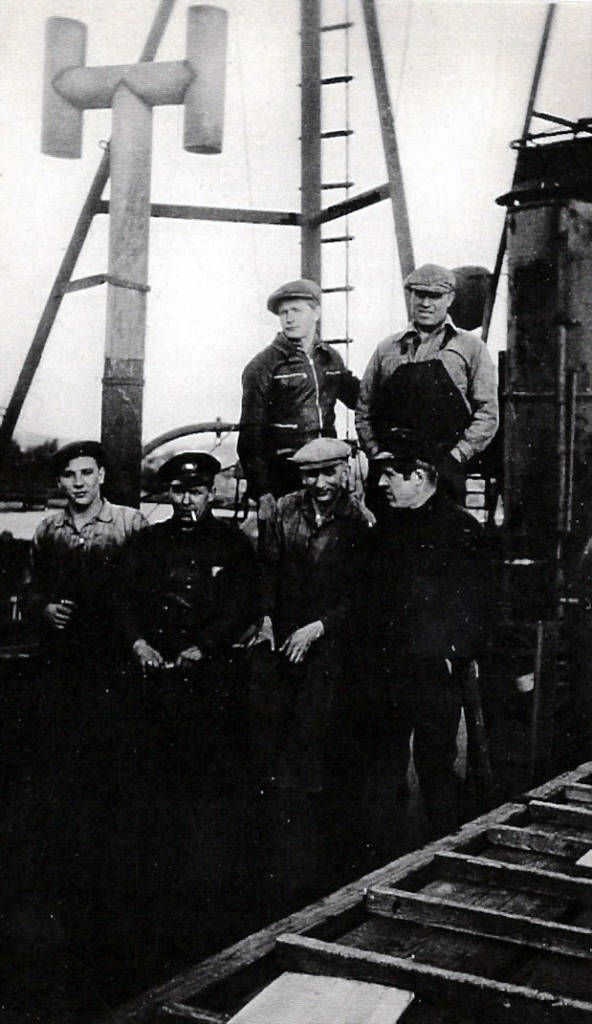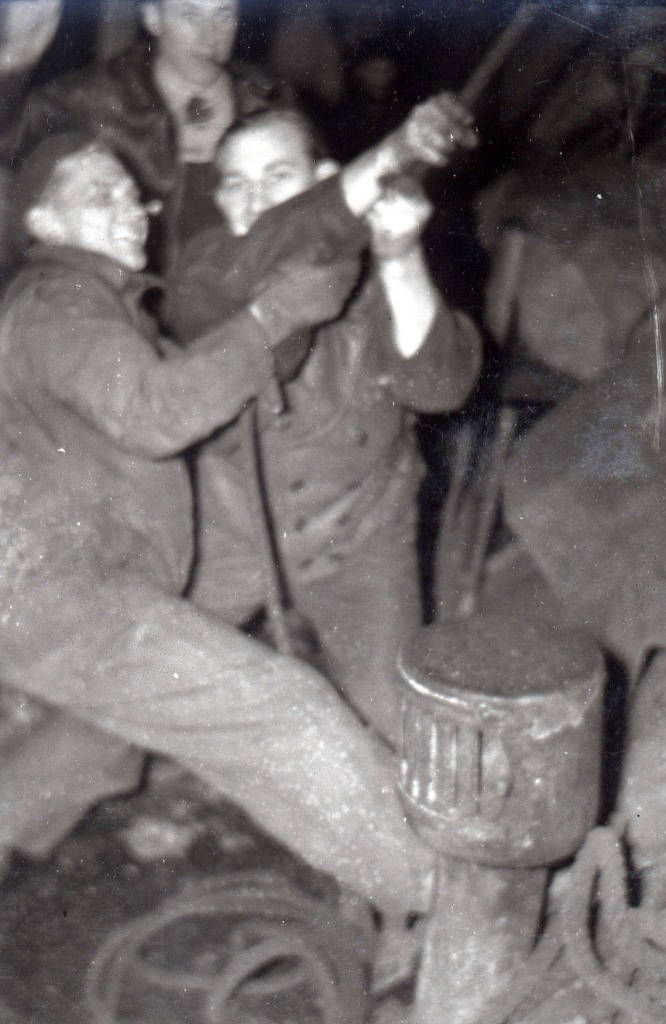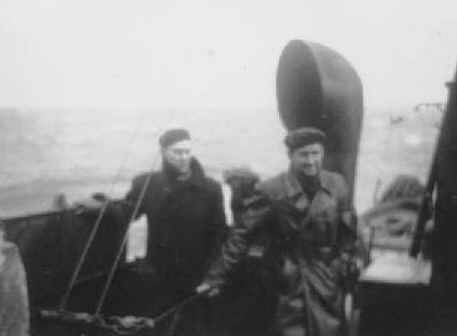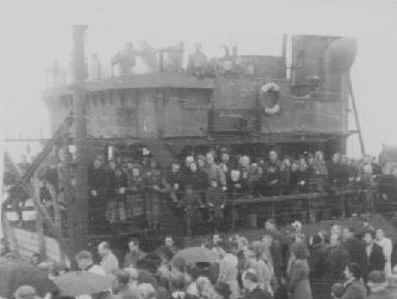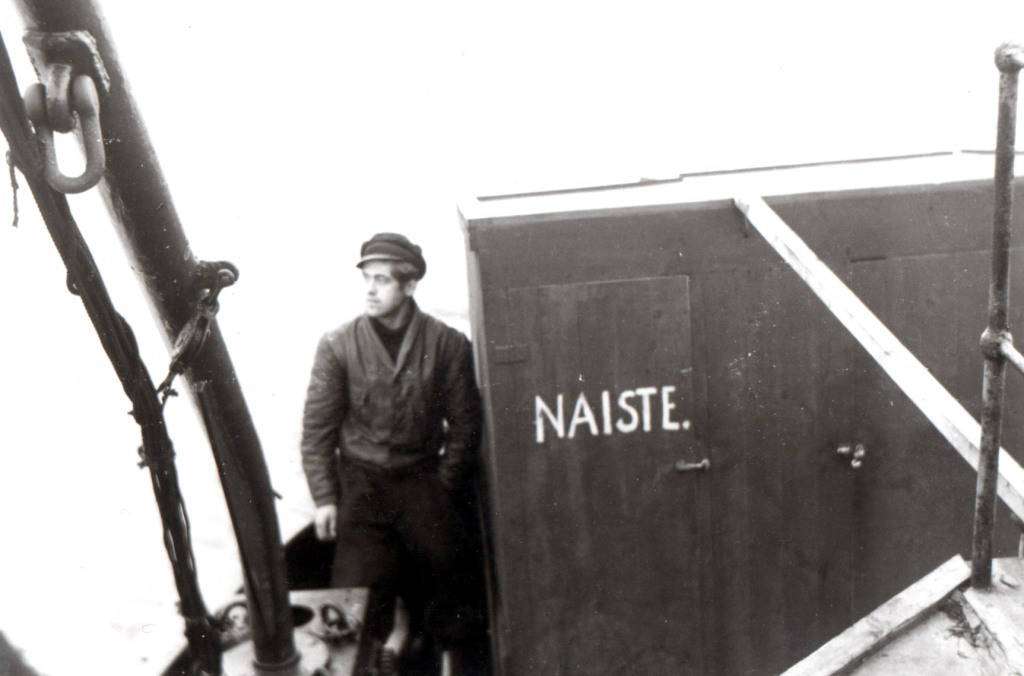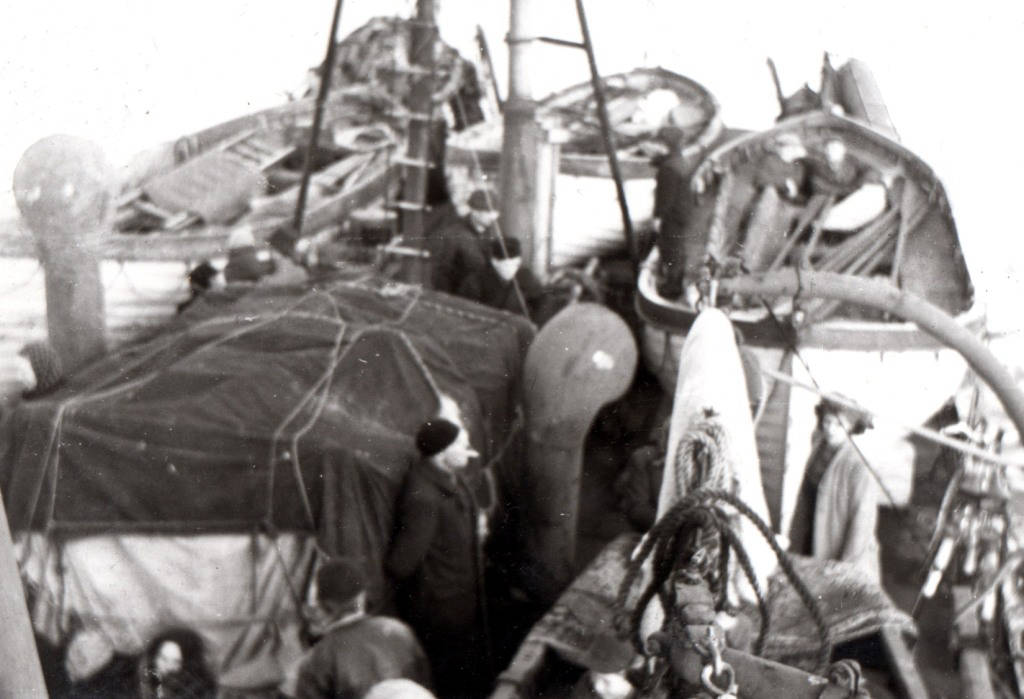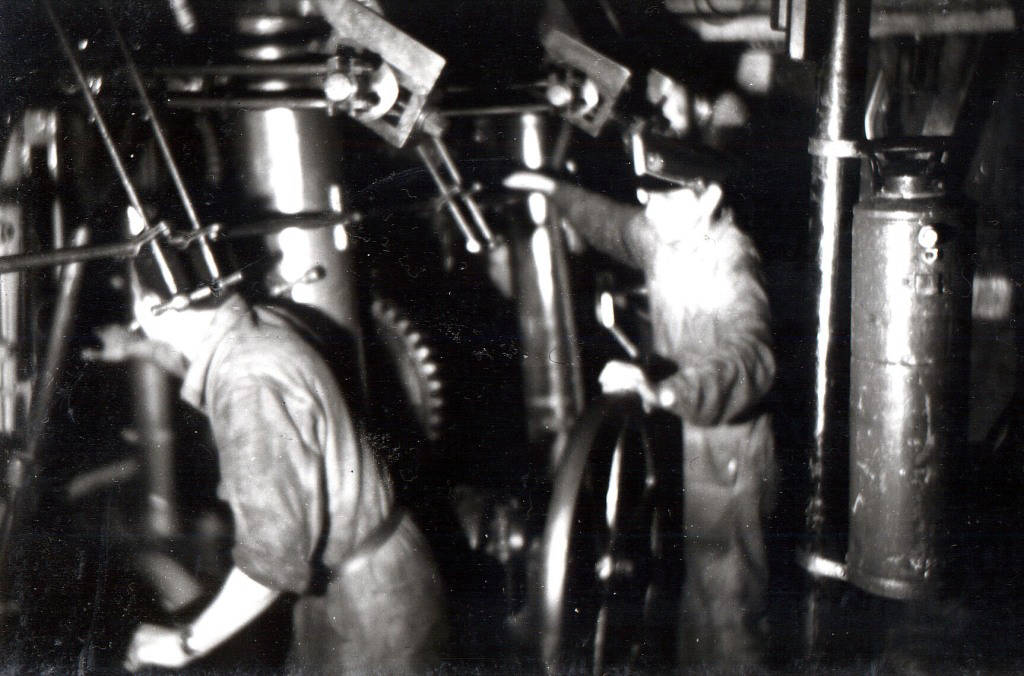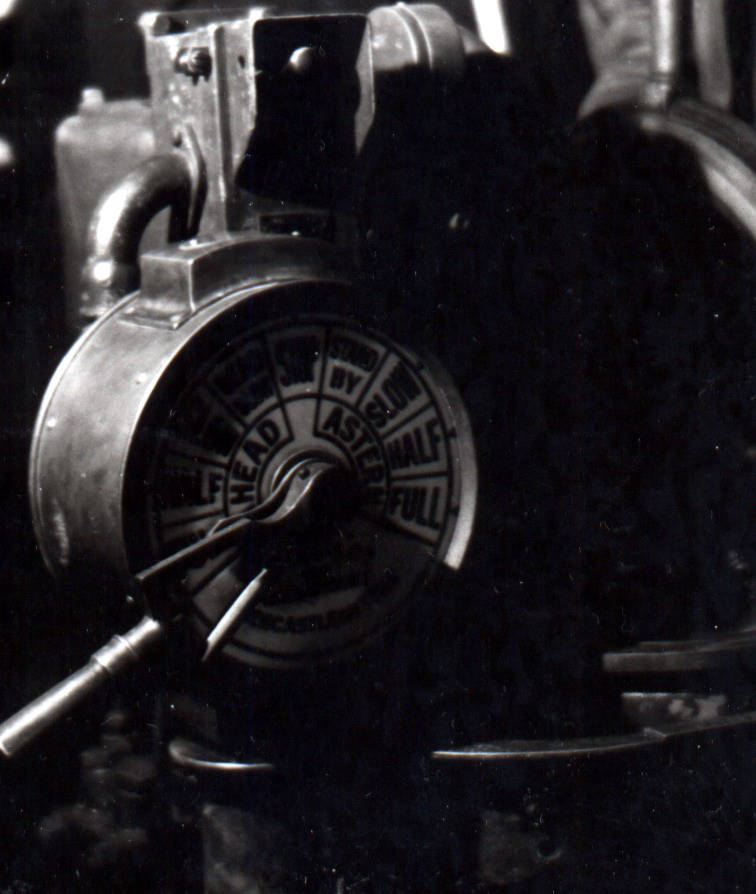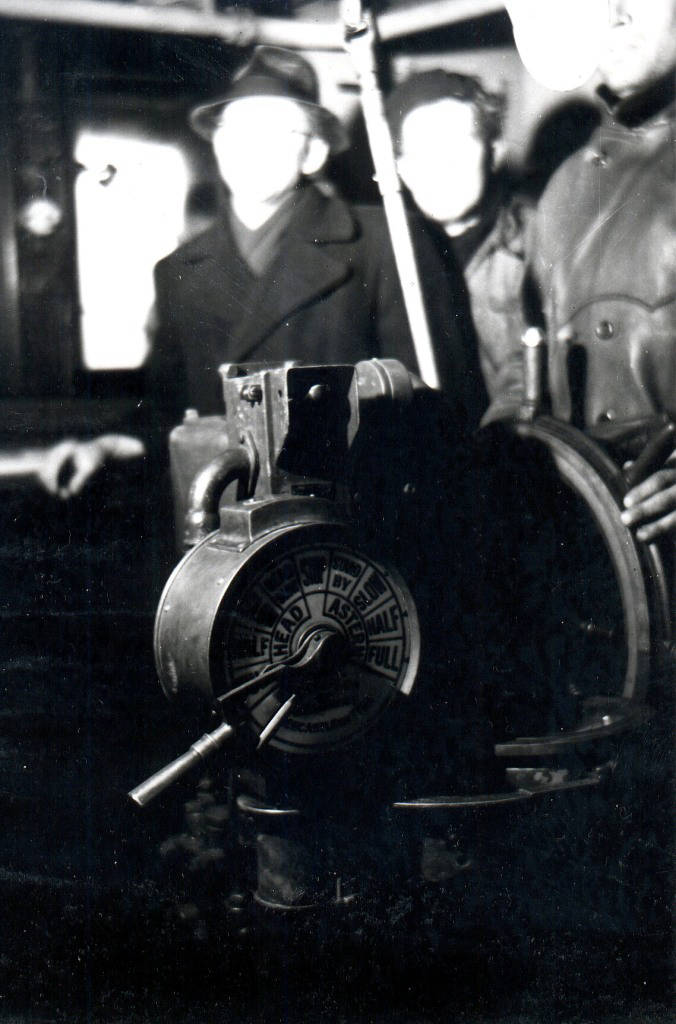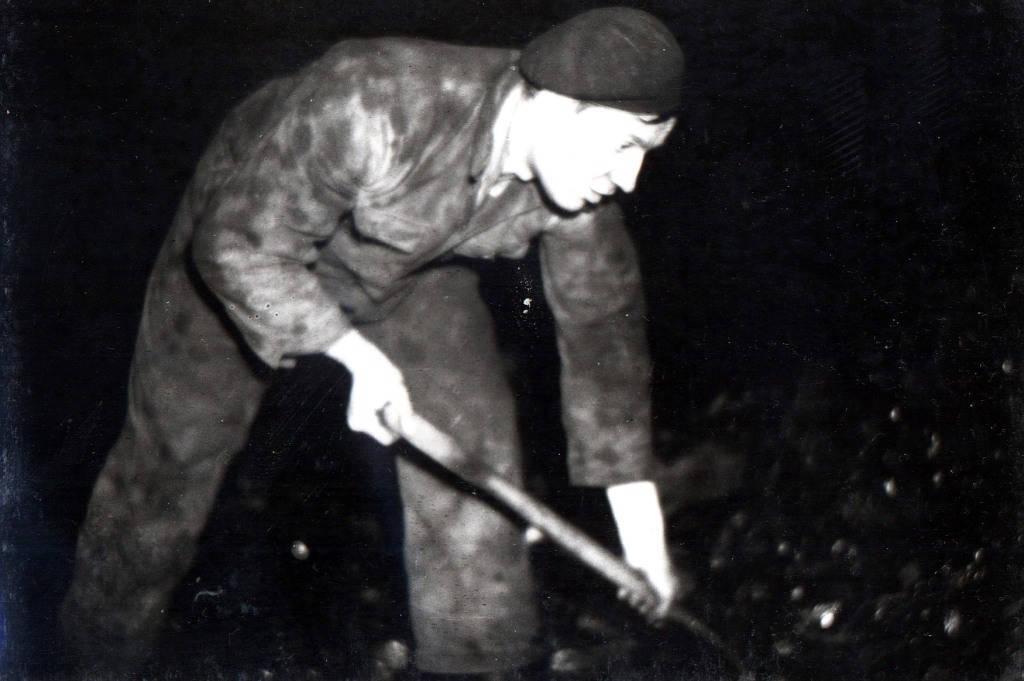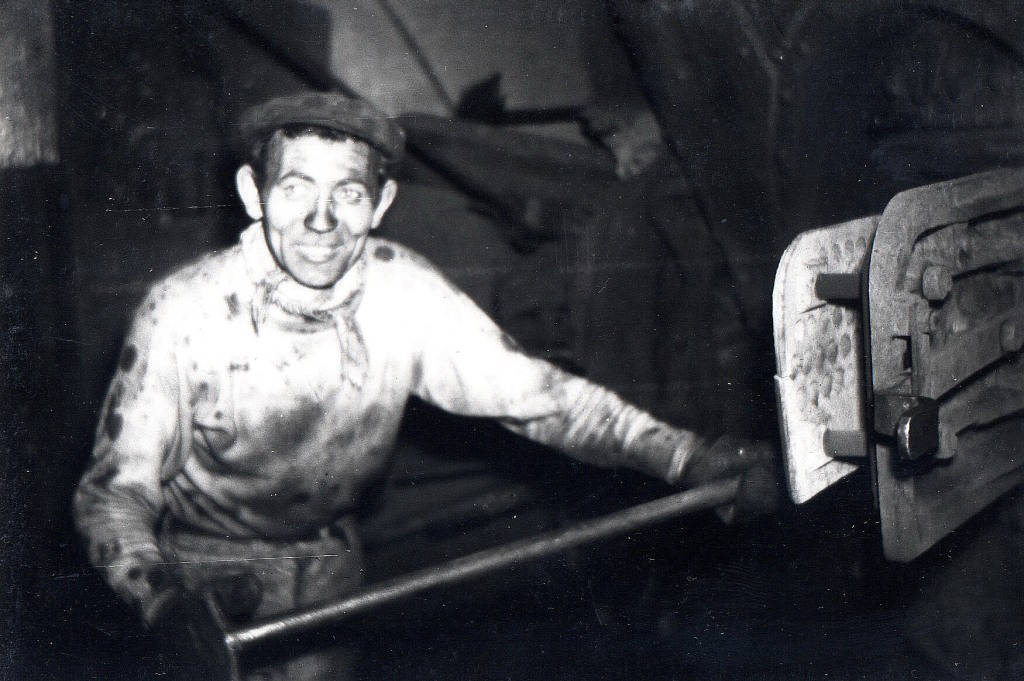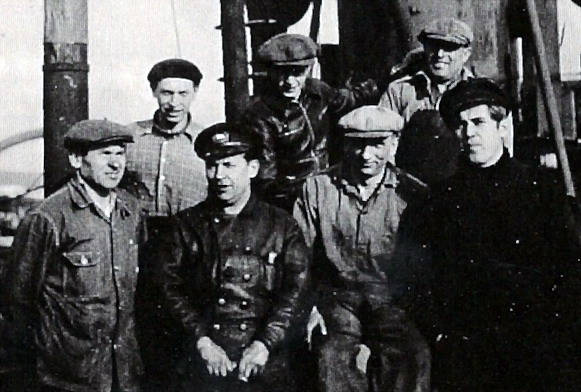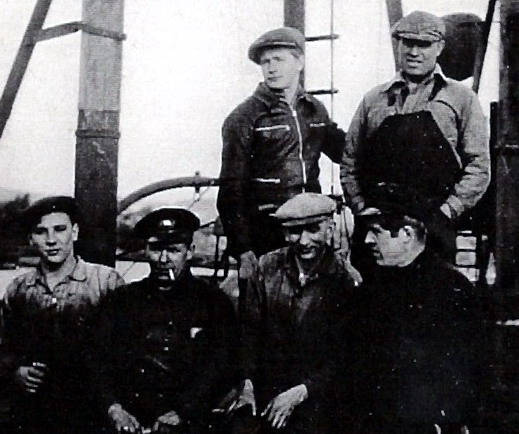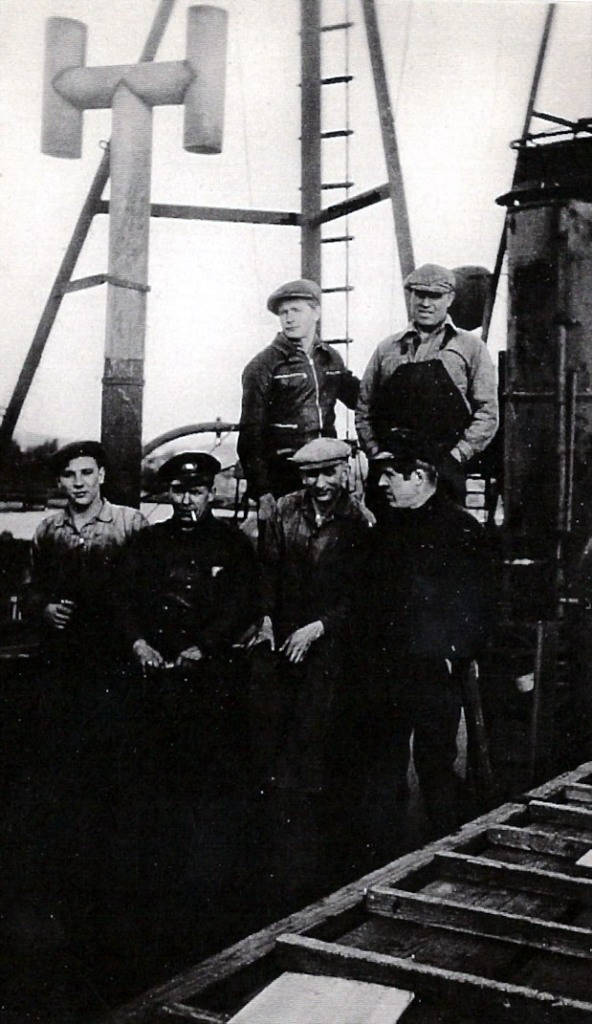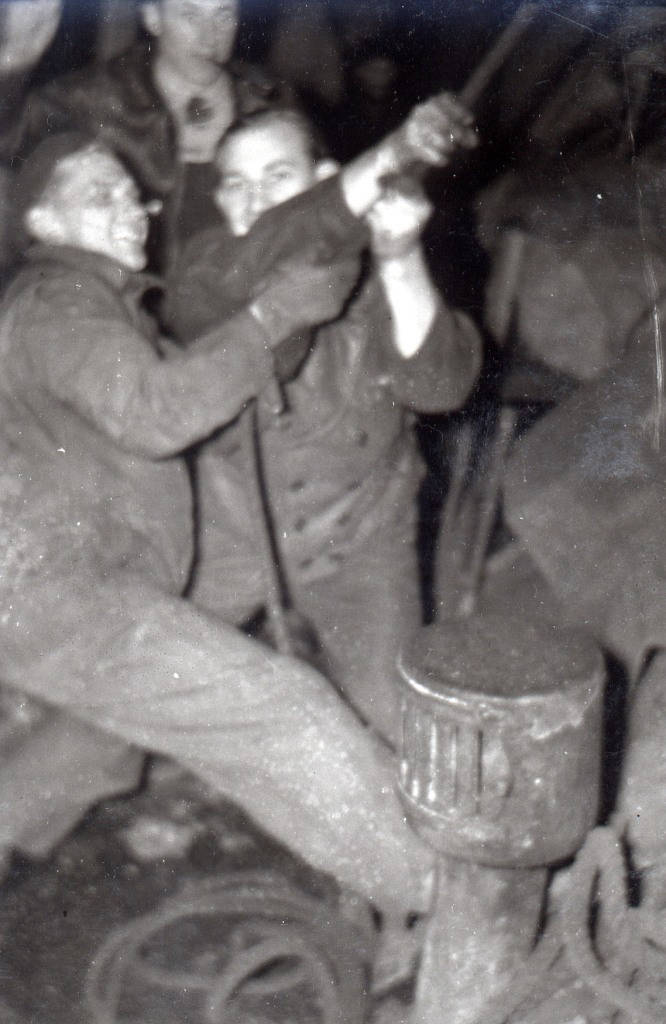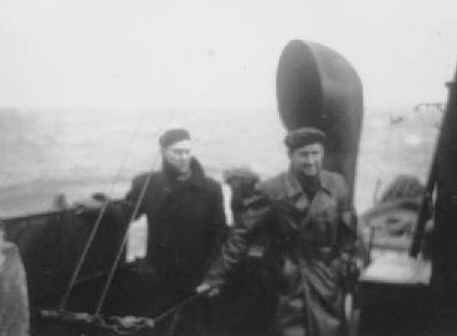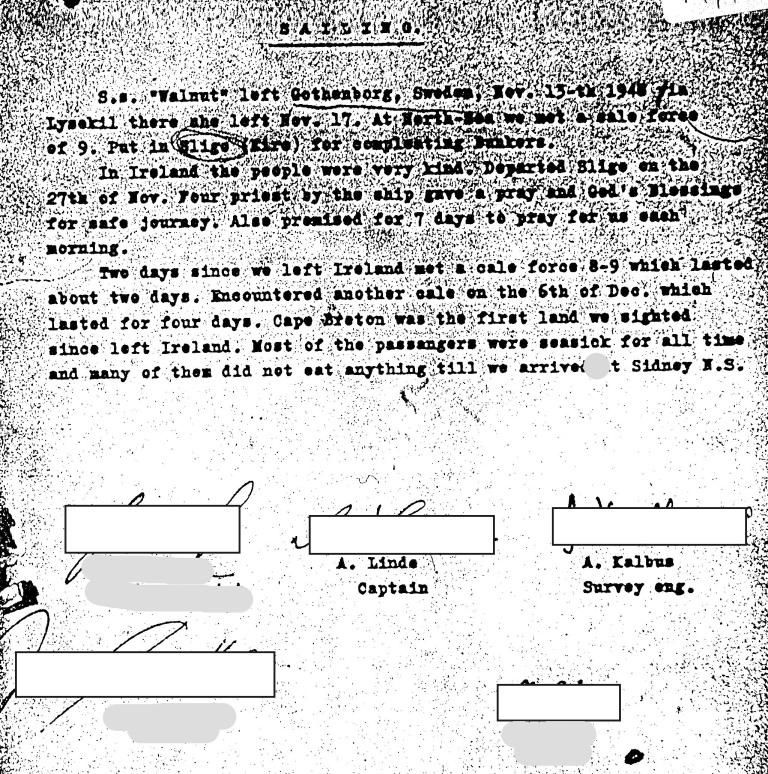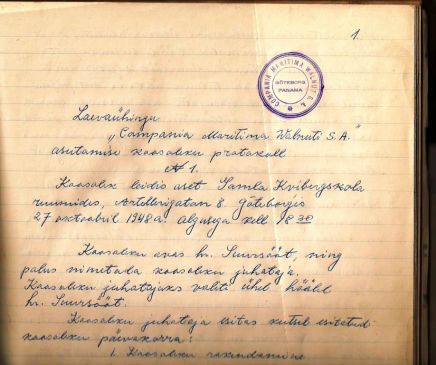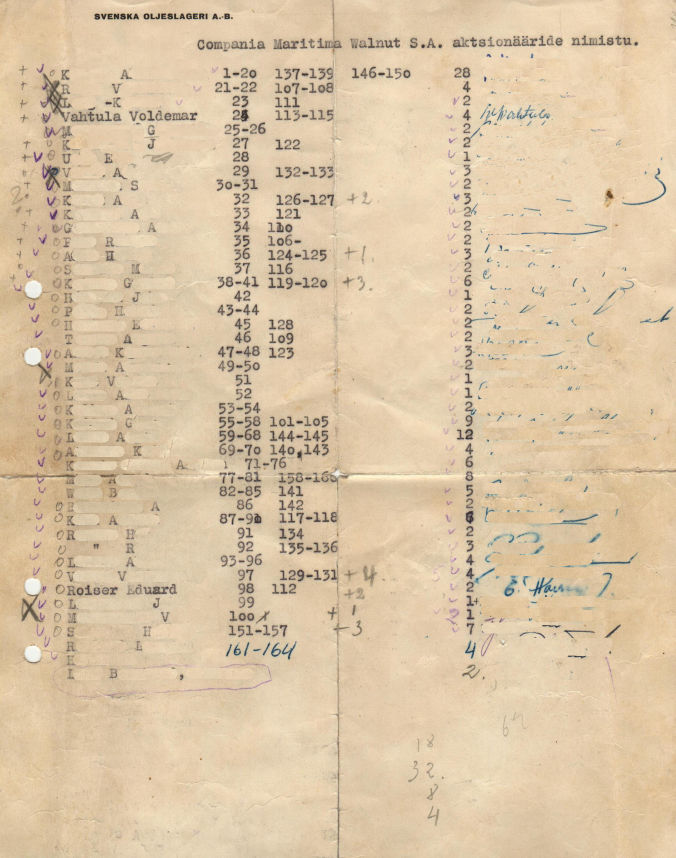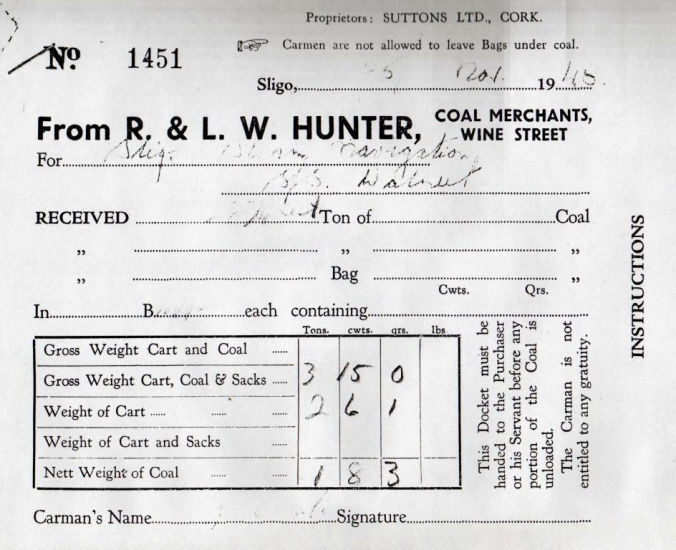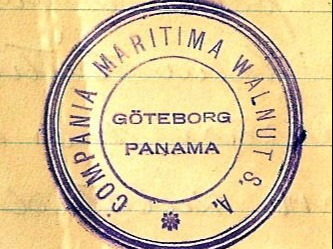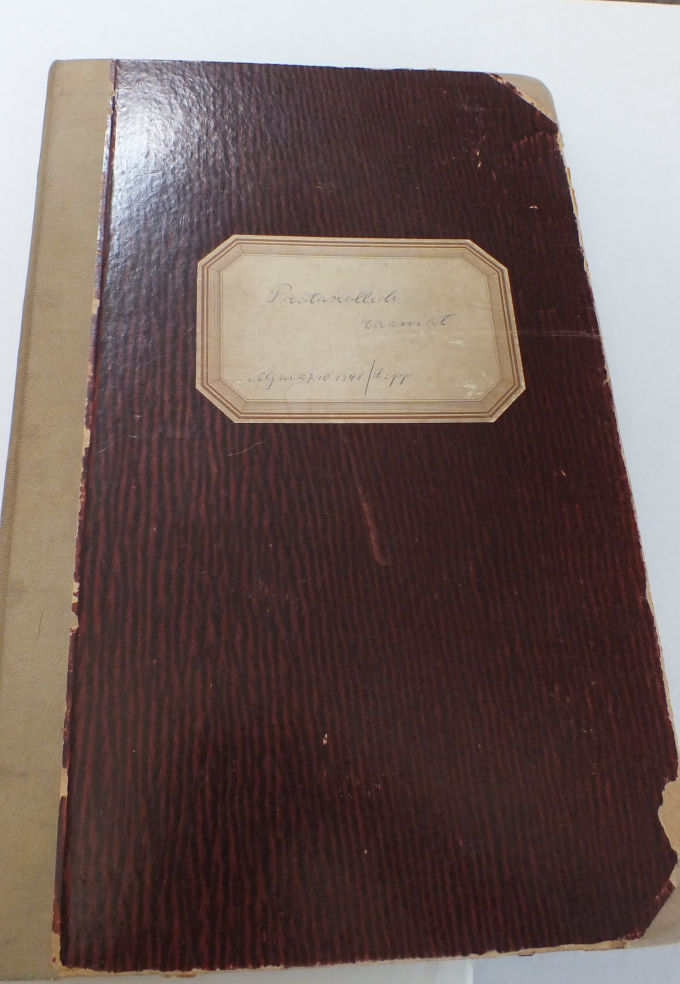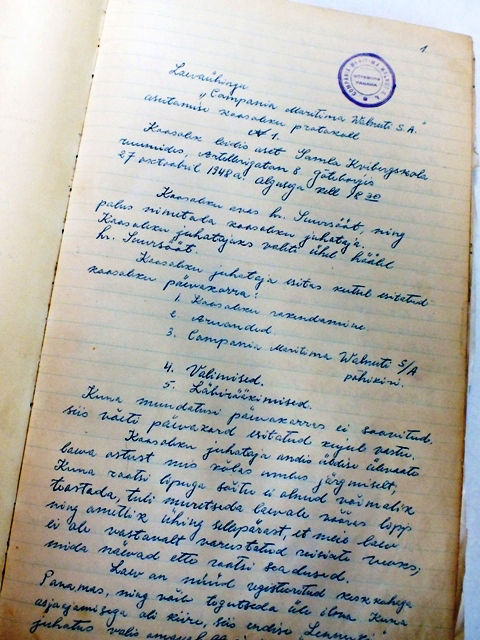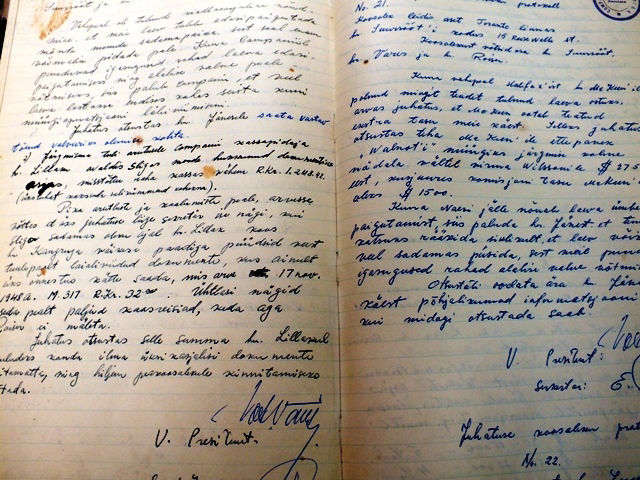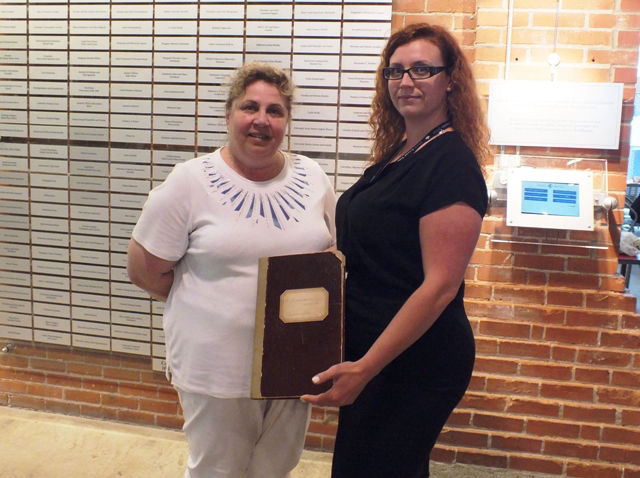Further entries in the Minute Book describe the following events:
October 28, 1948 onboard the Walnut - It was decided that all passengers need to bring their own bedding. A doctor would be taken on board under the following conditions: Free passage including a free share.
November 22, 1948 - Another entry into the journal was made while onboard the ship in Ireland. In attendance were the Executive and Audit Committee. On the agenda was final ship investments --
"Due to ship inspections resulting in further expenditures, (ca. 10,000 kr.), the two-week delay in beginning the journey (ca. 10,000) and the unexpected necessity for more coal, the co-operative has had larger than budgeted expenses."
To cover the extra expenses it was decided to sell the remaining shares below face value for $40 each. This mentioned sale is for current shareholders only."
The bulk of the Minute Book deals with the payment of crew and the disposition of the ship. In order to acquire assets, it was decided to sell the ship as quickly as possible. They were looking to sell the ship for $30,000. There is some mention of an offer for $28,000 that seems to have fallen through and another offer of $20,000 with a buyer that needed a week to gather funds. Another offer of $10,000 was received which was further reduced to $7,500. As reported in Halifax newspapers, in December of 1950, the ship was vandalized, stripped of her brass fittings and the sea cocks opened. She sank in 20 feet of water on the Dartmouth side of Halifax Harbor.
At some point an undated summary of events was prepared - written in English - assumedly prepared by the Executive? The following are excerpts:
"The Compania Maritima Walnut S.A. was founded in the interest of a group of people (refugees) who had seen the red terror in their homeland and now wished to get further away from it choosing the free Canada as their destination. In accordance with Swedish regulations these people got organized whose aim was to cross the Atlantic in a vessel purchased by a common effort. So a company was founded, the statue of which was registered in the Register of Panama. It was understood that the company was not to aim for any financial gains and that this common enterprise was to be liquidated as soon as the vessel got sold on reaching Canada, as everybody knows, the company has not possessed any other funds besides the vessel.
The management (Board of Directors) has never received any pay for their duties and since arriving in Canada has not been hiring any extra help to whom one could have given the job of informing the shareholders...In connection with our bookkeeping we possess documents in four languages (English, Swedish, Spanish and Estonian).... If we had to have these documents translated copies made of and sent to .....the expense would be considerable and the majority of the shareholders do not find it acceptable...
On arriving in Canada everybody on the vessel was detained in a detention camp for medical and political screening. This lack of freedom to move outside the camp hindered the company's next step - selling of the vessel. Later when more freedom to move outside the camp was given the Management started busy activities in trying to sell the vessel. The sale offer was advertised in newspapers, shipbrokers were consulted etc. After a time we received the permit from the Canadian authorities to remain in this country and the members of our organization left the camp for various destinations all over Canada. The vessel had been docked in the French Cable Wharf, Halifax and according to the CNR regulations it was necessary to arrange a watch on her. As the company did not possess any funds it was agreed with the watch that as soon as the vessel was sold the watch would get his pay. The long and busy activities in trying to sell the vessel did not give any results. The Management of the company was very anxious to get the vessel sold because they are holding the biggest number of shares. It was also understood that any of the shareholders was welcome to have a try at selling the boat. Several shareholders tried, but unfortunately without any success. Then the CNR needed the wharf and the vessel was moved by them to another place where the expenses for watch duties properly carried out would have been considerably greater, and at the shareholders meeting it was decided against raising any funds for a more adequate watch. Also the suggestion to bring the vessel to Montreal or Toronto where the watch could have been arranged more cheaply was turned down. Some shareholders even commented that let the boat sink rather than that they should finance her any further. When the sinking really happened it came as a blow to everybody. The Canadian authorities believe that the cause of sinking was hooliganism. Some time later, the vessel was sold by Canadian authorities in view to pay the watch who was asking for the pay due to it...."
Records indicate that as at 1949, total income for the co-operative was $7,714.85. Expenditures totalled $7,045.97. After the Walnut was salvaged and sold, the Courts paid out $3,439.85. From these monies attorney fees and various claims were paid.
Pier 21 records indicate that the ship was sold at auction in 1951, rebuilt by Borromee Verreault of Mechins, QC, renamed KETA and traveled on the St. Lawrence and in the Arctic until it broke up in 1975.
